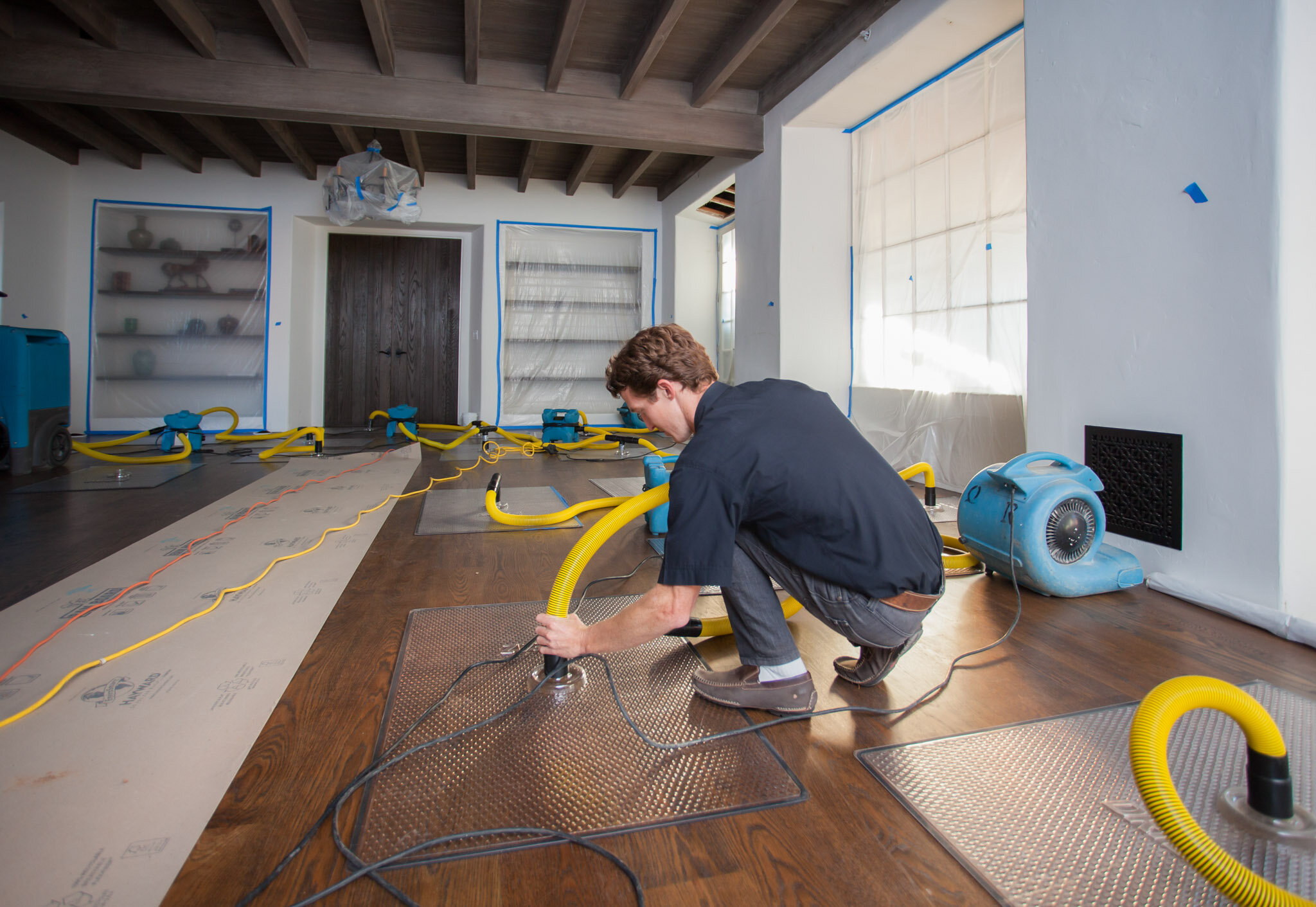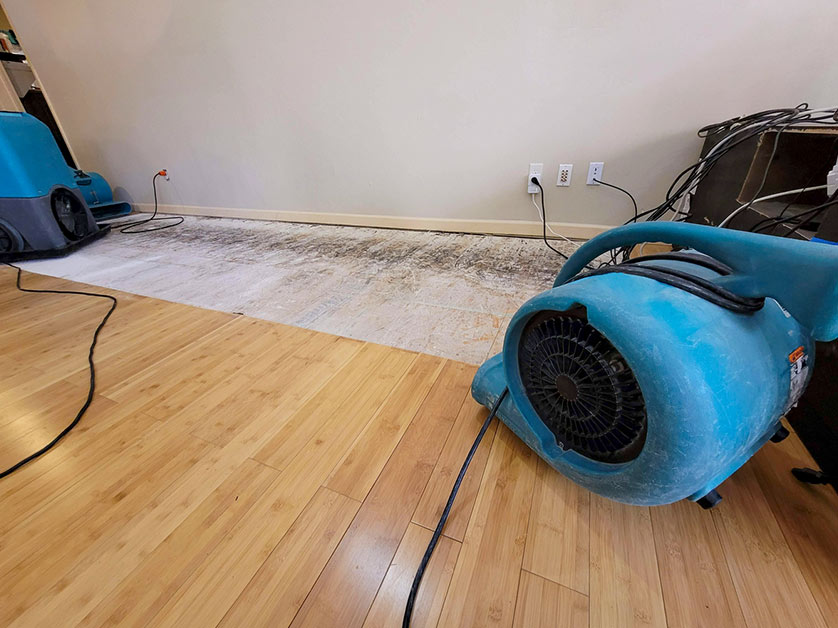What to expect from professional Water Damage Restoration
Wiki Article
Water Damage Restoration 101: Comprehending the Process and Cost
Water damage can strike suddenly, leaving homeowners in a state of complication. Comprehending the reconstruction process is crucial for effective healing. From examining the damage to selecting the appropriate provider, each action influences the total outcome and cost. Aspects such as the sort of water damage and seriousness additionally play a substantial duty. What are the particular methods used in remediation, and exactly how can one get ready for potential expenses?Kinds Of Water Damage

First Assessment and Examination

Water Removal Strategies
Following the initial analysis, reliable water extraction techniques are utilized to mitigate damage and stop further concerns. These strategies include using customized equipment such as submersible pumps and industrial-grade vacuums - Water Damage Restoration. The option of technique depends upon the quantity of water present and the type of products affected. For standing water, completely submersible pumps are normally made use of for quick removal, while vacuum cleaners are ideal for drawing out water from rugs and furniture. Furthermore, advanced approaches like water removal floor coverings might be utilized for hard-to-reach areas - Water Damage Restoration. The goal is to remove as much water as feasible, decreasing the capacity for mold and mildew growth and structural damage. Motivate and effective water removal is crucial in the general water damage reconstruction processDrying Out and Dehumidification Process
When the water extraction is complete, the drying out and dehumidification process ends up being critical to recovering the afflicted area. This phase normally utilizes industrial-grade dehumidifiers and air moving companies to properly reduce wetness levels. The dehumidifiers pull in wet air, removing excess humidity, while air moving companies circulate air to accelerate evaporation. Surveillance tools is frequently made use of to track humidity and temperature level degrees, guaranteeing optimal drying conditions. The duration of this procedure can vary depending on the extent of the water damage and ecological aspects. It is necessary to thoroughly completely dry all impacted materials, consisting of walls, floor covering, and home furnishings, to avoid mold development and structural damage. Proper execution of this action is crucial for an effective reconstruction end result.Cleaning and Disinfecting Affected Areas
When the drying out process is complete, a detailed initial evaluation and assessment of affected locations is vital to determine contamination levels. Effective cleansing strategies and ideal items should after that be utilized to get rid of debris and discolorations. Sanitization and sanitation techniques are necessary to assure that unsafe virus are gotten rid of, bring back the area to a safe condition.Preliminary Analysis and Examination
Before starting any type of remediation efforts, an extensive preliminary evaluation and evaluation of the impacted areas are vital for efficient cleaning and sanitizing. This process includes determining the degree of water damage, establishing the resource of the water invasion, and examining the materials influenced. Inspectors typically search for indications of mold development, architectural stability issues, and damaged valuables. The assessment also consists of checking dampness degrees using customized tools to ensure no surprise water pockets remain, as these can bring about further problems. Recording the searchings for is essential for intending the following steps in the reconstruction process. A thorough initial evaluation enables reconstruction professionals to design a targeted technique for effective cleansing and sterilizing, eventually decreasing damage and wellness threats.Cleaning Up Techniques and Products
Effective cleaning and sanitizing of water-damaged locations call for a range of strategies and products customized to the details materials influenced. For porous surfaces like drywall and carpeting, removal methods are necessary to get rid of excess moisture, complied with by deep cleansing with specialized detergents. Non-porous products such as tile or metal can be cleaned using commercial-grade cleansers that successfully get rid of impurities. Steam cleaning is an additional effective strategy, specifically for rugs and upholstery, as it utilizes high temperature levels to eliminate microorganisms and mold and more info mildew (Flood Cleanup Services). In addition, green items are significantly preferred for their safety and efficiency - Water Extraction And Drying. Eventually, choosing the ideal cleaning techniques and products not only assures prompt tidiness but likewise aids in avoiding further damage and wellness dangers connected with water breachSanitization and Disinfection Techniques
When dealing with water damage, proper sanitization and sanitation methods are necessary to ensure the security and health of the affected environment. After preliminary cleaning, surface areas need to be treated with proper anti-bacterials to get rid of pathogens, mold and mildew, and microorganisms that prosper in moist problems. Typical methods include using EPA-approved chemical disinfectants, which can be applied through spraying or wiping methods. Additionally, ultraviolet (UV) light systems can efficiently sterilize areas by neutralizing microorganisms without severe chemicals. The option of approach typically depends upon the sort of products influenced and the extent of contamination. Ultimately, thorough sanitization not only recovers a safe space but also aids stop future health threats connected with remaining dampness and mold growth.
Repairs and Restoration Options
Evaluating the damage brought on by water exposure is vital for establishing the suitable repairs and remediation options. House owners may encounter various issues, consisting of harmed drywall, warped flooring, and endangered architectural components. Depending upon the extent of the damage, repair services may entail changing sections of drywall, setting up brand-new floor covering, or enhancing architectural beam of lights. In situations of extreme damage, complete substitute of afflicted products may be required. Additionally, professional conservators typically suggest using wetness meters to assess surprise wetness degrees prior to selecting the most effective course of activity. It is essential to act without delay to avoid mold and mildew development and more deterioration. Choosing the ideal choices not just brings back the building however additionally guarantees lasting security and functionality.Elements Affecting Restoration Expenses

The extent of water damage directly influences the restoration costs home owners can expect to incur. Factors such as the resource of the water, the duration of direct exposure, and the damaged materials substantially affect prices. Clean water damage from a broken pipe is generally much less costly to recover compared to damage created by sewage. Additionally, the degree of contamination dictates the requirement for specialized cleansing and disposal services, additionally increasing expenses. Geographic area likewise plays a duty, as local labor rates and schedule of reconstruction services can vary. Lastly, the urgency of the action influences prices; quicker treatments normally result in decrease overall expenses by protecting against further damage. Comprehending these variables is important for home owners when approximating remediation prices.
The 3 key types of water damage are categorized based on contamination degrees: tidy water, grey water, and black water. A detailed initial evaluation and assessment are vital steps in the water damage repair process. For standing water, completely submersible pumps are usually made use of for fast removal, while vacuum cleaners are perfect for drawing out water from carpets and furniture. The degree of water damage straight impacts the repair sets you back homeowners can anticipate to incur. Tidy water damage from a damaged pipe is generally less pricey to recover contrasted to damage created by sewer.
Report this wiki page